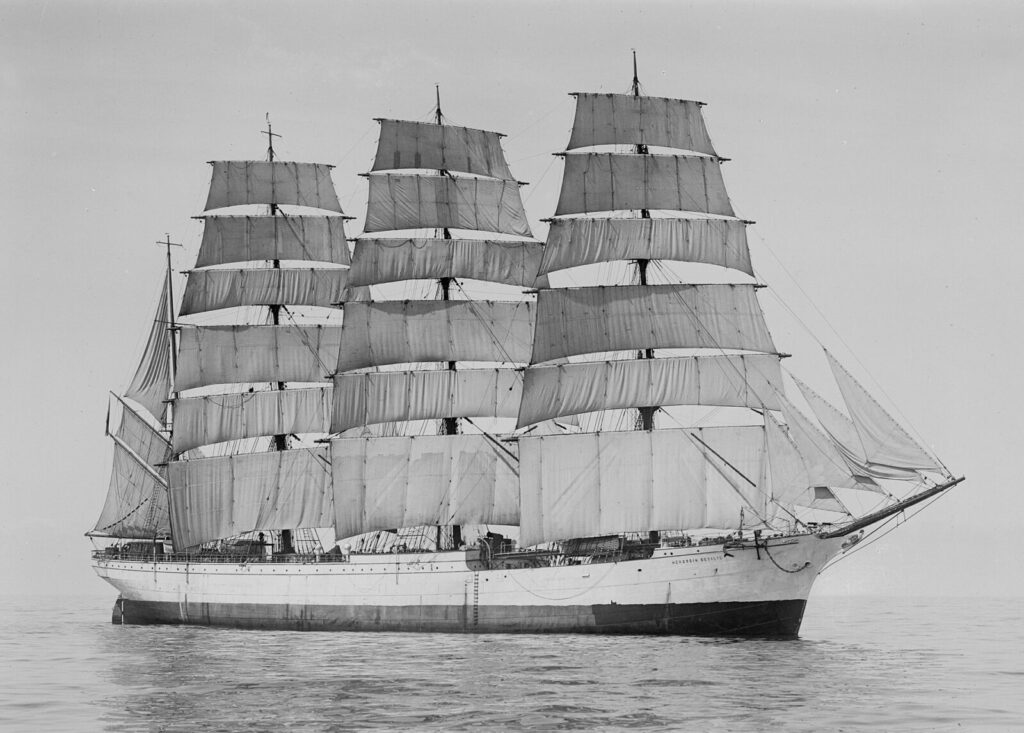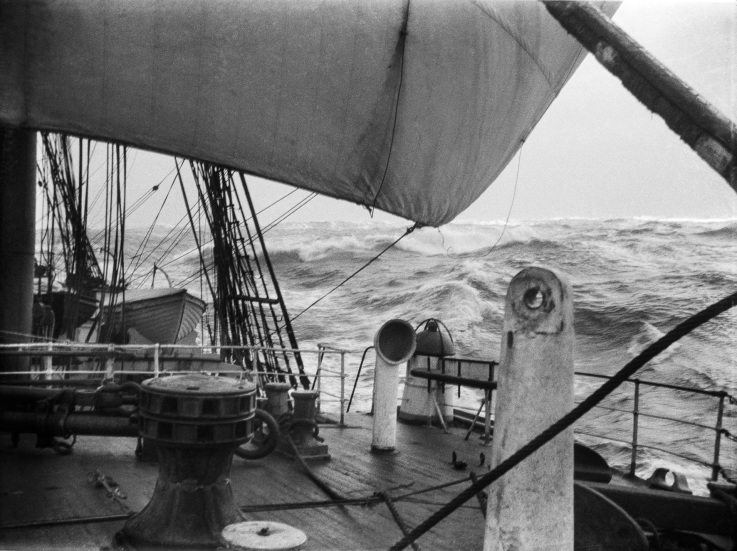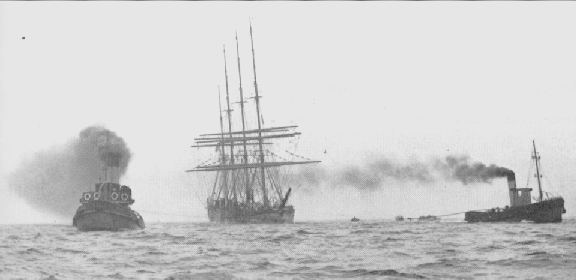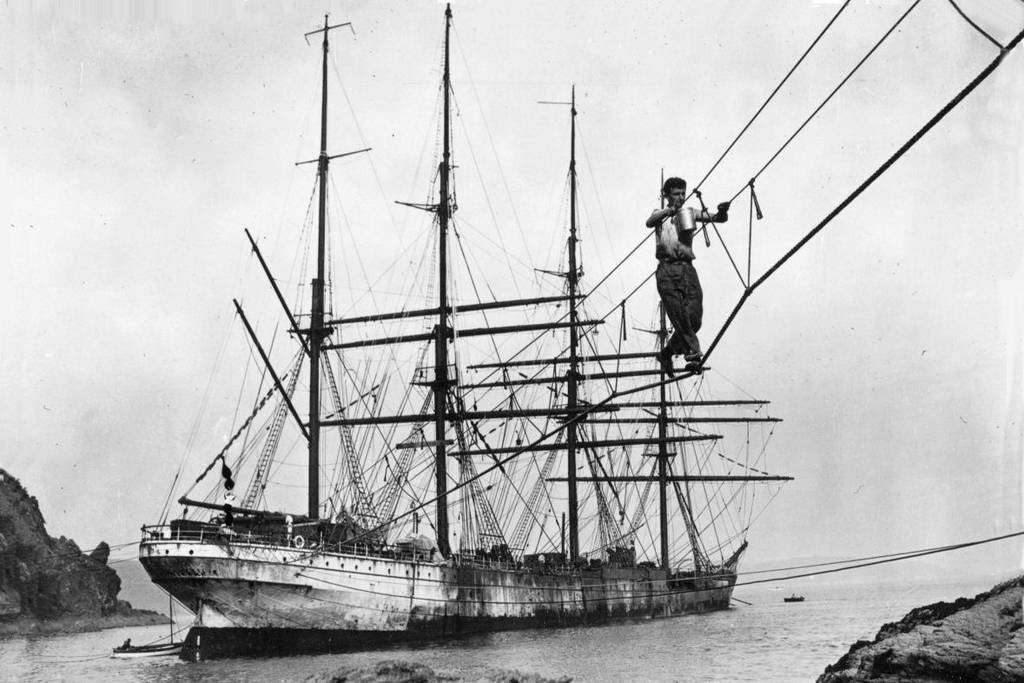Herzogin Cecilie was my first and I think remains my only “Clipper”, a legendary class of sailing ship that included the Cutty Sark, that last remaining example of her type in the world, almost lost to history when she caught fire during a refurbishment in May of 2007. The term “clipper” comes from a bygone era when ships raced from Australia back to the UK, to ensure they got the very best price for commodities like wool and tea. It was a profitable merchant who’s ship arrived in port “first”, hence these sailings were essentially races, where it paid to be a winner. One of the fastest of the ships of the day (1870’s) the Cutty Sark topped out at 17.5 knots which is 20mph, the Herzogin Cecile was timed at Skagen, somewhere around 1920, at 20 knots which was quite a “clip”….. a term for rattling along at speed, and one which could have its origins way back in the days of horse travel…. Another term for these huge traders, with their sleek lines and immense masts was “Windjammers”, far easier to figure out when you take a look at how many sails flew from their huge masts and their bow-sprits…….

So, for those that like their numbers and details: Herzogin Cecilie was yard number 122 and was launched on 22 April 1902. Completion was on 7 June that year. She was 334 feet 8 inches (102.01 m) long, with a breadth of 46 feet 3 inches (14.10 m) and a draught of 24 feet 2 inches (7.37 m). Herzogin Cecilie was built for Norddeutscher Lloyd Bremen. Unlike other contemporary German merchant sailing ships, the black Flying-P-Liners or the green ships of Rickmers, she was painted in white. She was one of the fastest windjammers ever built (Wikipedia) evidenced easily, as she won the annual grain race from Southern Australia to Falmouth four times prior to 1921, she again won the grain race four times in eleven trips from 1926 to 1936…… a seriously impressive achievement

Herzogin Cecilie is an unusual name and I remember asking if anyone in TIDSAC knew what it meant, I was faced with a round of blank faces and it took me 27 years to find out, not that I was looking all of that time, it just took until now to take the time to find out. The answer is her namesake, Duchess Cecilie of Prussia, a striking beauty of the time and Crown Princess of Prussia, being married to Crown Prince Wilhelm of Germany (Son of Kaiser Wilhelm II) and daughter of Frederick Frances III of Mecklenburg-Schwerin, born September 1886 dying in 1954 aged 67. “Herzogin” being the Prussian for Duchess…. hence Herzogin Cecilie…. or in English “Duchess Cecilie” ……….far easier!

The Herzogin Cecilie came to her end as a result of a collision with Ham Stone in thick fog April 1936, whilst en route to Ipswich, she floundered at Bolt Head but that wasn’t her end. Herzogin Cecilie was a strong ship, used to the punishment of epic, global journeys, and built to withstand the worst the Roaring Forties and the like could throw at a ship, and she wasn’t going to go without a fight……..

Herzogin Cecilie had been running Wheat and her cargo was deteriorating, to the point where it could be smelt by those who gathered to see her on the rocks, where she had quickly become a curiosity to the general public. The local Devon council decided pollution from the cargo would be undesirable and that she should be salvaged if practical. Herzogin Cecilies’ cargo was removed and as she lightened it became possible to float her at high tides. Tugs were brought round to her to drag her from her ignominious resting place and it was decided to beach her in Starhole bay locally in order to facilitate repairs

Sadly Starhole Bay, considered a safe site to beach Herzogin Cecilie, was far from that, it didn’t help that a series of gales sprang up locally in July of 1936, just after her beaching, but Starehole bay, as any local diver today will tell you, is far from a sandy and benign cove, more a mix of Rock, Sand and Kelp…… It did not take long for the fury of the July gales and the rocks under her hull to break the Back of Herzogin Cecilie, and, after that, it wasn’t much longer before her masts began to give way and festoon her decks, a sorry and tragic end to such a magnificent example of a dying era……..

I would dive her in May of 1992, just 56 years on from her demise in that secluded, but fatal cove just around the corner from Salcombe in Devon. The club had decided on a weekend away to dive sites around Salcombe as a change from those of Portland and Dorset. I was excited as we had recently dived a couple of “scenic” sites and they weren’t particularly exciting if I’m honest. The chance of diving another shipwreck was just what I was looking for, and kitting up and getting the RIB into the water from the small public slip at Salcombe was fun and full of anticipation. The trip around the coast-line to the Herzogin Cecilie site has either been blanked or has faded from memory, like so many trips out to dive-sites, they “grey” into every other trip you’ve been on…….The memory of the dive, as ever, never leaves you and even though she is well broken, it was never hard to find her final resting place, here’s what my log says from the day……

“Down the shot line to 7m, the wreck is heavily broken and in a few sections, we found 2, corroded to the ribs but with some plating intact a lot of interesting life but a fair amount of swell….Viz 1-2m” Now I might be accused of brevity there by those who read this, perhaps even romanticising somewhat, occasionally, but I remember the dive clearly and we spent much of the time hunting in poor viz for signs of wreckage. There was steel everywhere, Herzogin Cecilie had a steel hull, and it was all riveted, so we knew our plates were pre-war wreckage and likely to be exclusively from Herzogin Cecilie, but you still see plates for what they are, big slabs of Steel, and as she had been well broken up over the last 56 years in the bay, we were unlucky not to find anything on the day that resembled more than that. Others have found her a far more giving dive and speak of tunnels to swim through and more recognizable wreckage and hull fittings, but we were to find nothing distinct, nothing “Ship” like, on the day

I remember Herzogin Cecilie as a series of plates and broken metal lying in a shallow grave under 7m of Devon sea, those who live locally, some of them at least, will remember her hard on the Ham Stone, or lying at the mercy of the July storms of 1936 in Starhole bay. Those who sailed in her will mostly, if not all, have passed into history with her, but it doesn’t take much imagination to think of her heeled over, flying a cargo of wheat or wool at 20 knots over howling seas…..in her prime….sails straining to cope with the wind and her immense masts creaking in the spray……….

